“I’m a spinner guy, that’s how I’ve paid for everything I own,” jokes Lake Erie guide Capt. Ross Robertson…but he’s not really joking.
Spinner rigs keep clients catching fish and coming back, which is good for a guide’s bottom line. Put enough lines out, and the spread acts almost like a vacuum when pulled through big pods of walleyes — especially during mid-summer.
Not all walleye pods are big on Erie, and sometimes the fish are high in the water column. The old saying that 90% of the fish live in 10% of the water can be true on Erie.
“Pulling spinners at 1.5 mph is not the most efficient way to find fish. That’s when you need to think about other ways to intersect fish.”
For Ross, that means spoons.
“Spoons are a great way to find fish fast. They aren’t meant to be fished slow — most don’t work well below 1.8 mph. In most cases, 2.0-2.5 mph is the accepted speed range, but this year we’ve been burning them at 3.5 mph with great success.”
You do the math. Robertson says he can cover almost 3x as much water with spoons versus spinner rigs.
“It’s like fishing 3 days instead of 1 — your odds go way up.”
And spoons work great at deeper 30, 40, and 50′, preferred walleye habitat during the height of the summer, especially on big waters.
“Spoons are probably the best walleye-finding tool not currently on the radar of most walleye anglers. Unlike a crankbait, I can run them really fast. Not many cranks run well at 3.5 mph. And when you have to fish a little deeper, cranks can get tough. Too much line out, tangling, all that.
“I can put a spoon on a Luhr-Jensen Jet Diver and send it down 30′ pretty easily. On a Dipsy Diver, I can work 50′ without any problem and the strike detection is great. They’re also a good landing percentage bait — it can be hard to keep fish buttoned on cranks trolled fast.”
Gear recommendations
But it’s not just any spoon that’ll work wonders. Profile is key — smaller sizes like the 2.5″ Silver Streak Jr. or 3″ Silver Streak Mini have proven most successful.
“I gravitate to the 3″ Silver Streak Mini. You don’t catch as many fish, but the ones you do catch are bigger. You’ll get 5x as many bites with the 2.5″ Jr. but that also means wasted time cleaning off junk fish like white perch, yellow perch and ‘spike’ walleyes.”
And lately Robertson’s gone even bigger — stepping up to 4 3/4″ spoons used by Great Lakes salmon anglers.
“Might seem crazy — and a lot of my clients think I’m nuts at first — but I’ll troll a full-size Silver Streak or Silver Streak Magnum. They look at me like I’m throwing a pounder for walleyes. But it’s not crazy at all.
“You won’t catch as many fish, but efficiency-wise, you have to. Ten minutes into the troll and they get it. 50% of something is better than 100% of nothing.”
Ross urges anglers to outfit each rod with a different color pattern and let the walleyes help you decide.
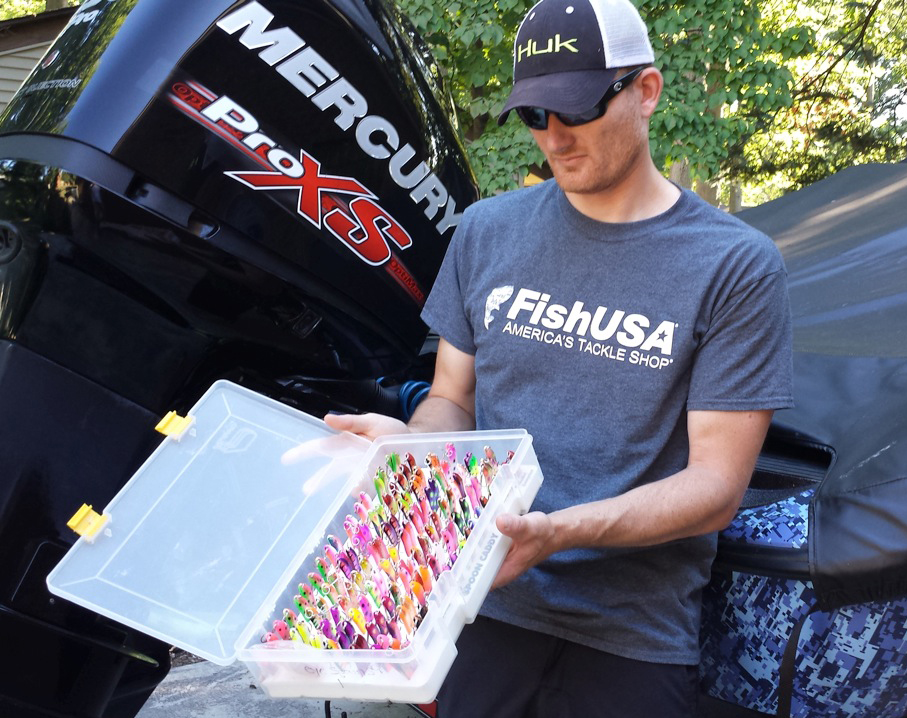
“Color on the back of the spoon is important, rather than just silver, nickel or gold. Pink or antifreeze are proven performers, but it think it’s more the contrast than the color, just like with spinner rigs.
“I always tie up my spinner rigs with contrast in bead color from front to back. I’ve watched enough underwater footage to tell you it’s contrast that gets the presentation to ‘pop’ whether you’re in green or blue water. Then add a little flash.
“The recent trend in the Great Lakes and greater Midwest is pink/purple and antifreeze, a kind of metallic yellow.”
Line choice
What’s the best line to use when trolling spoons? Braid, especially higher tests with ultra-thin diameter for less water resistance, strength, and sensitivity.
“Any time I’m using a depth device I move to braid. Any 30 lb braid that has 10 lb diameter will help you get deep and maintain sensitivity. Lately, I’ve been using 16 lb Sunline SX1 which has the diameter of sewing thread, yet is still strong and durable. I can get a lot of depth, and if I get junk fish on, I can tell by the board doing that ‘jerk, jerk, jerk’ thing. With mono you just don’t see it.”
Terminal tackle
Even if you abide by Robertson’s spoon size, color, contrast, and line choice recommendations, the devil’s in the details. Like terminal tackle choice.
“The biggest mistake you can make trolling spoons is not matching your terminal tackle correctly. It’s not different that walleye rigging or bass fishing…don’t use terminal tackle that’s too big. Same thing when trolling cranks…don’t use a giant snap swivel. Spoons are even more about balance.
“If you’re using a Jet Diver, don’t put on a snap swivel, just a snap. That swivel can create extra drag that sets the spoon off-balance. Spoons need that light flutter — that’s what gets the strike. Anglers have a tendency to over-terminal tackle their set-ups.”
Then, once Ross and his clients start getting bites, he’ll swap the spoon rods for spinner rigs.
“I typically end up working a football-field size area and by day’s end my GPS screen will look like an Etch-A-Sketch.”
He continues: “I’m not in love with spoons, but sometimes you gotta do what you gotta do.”

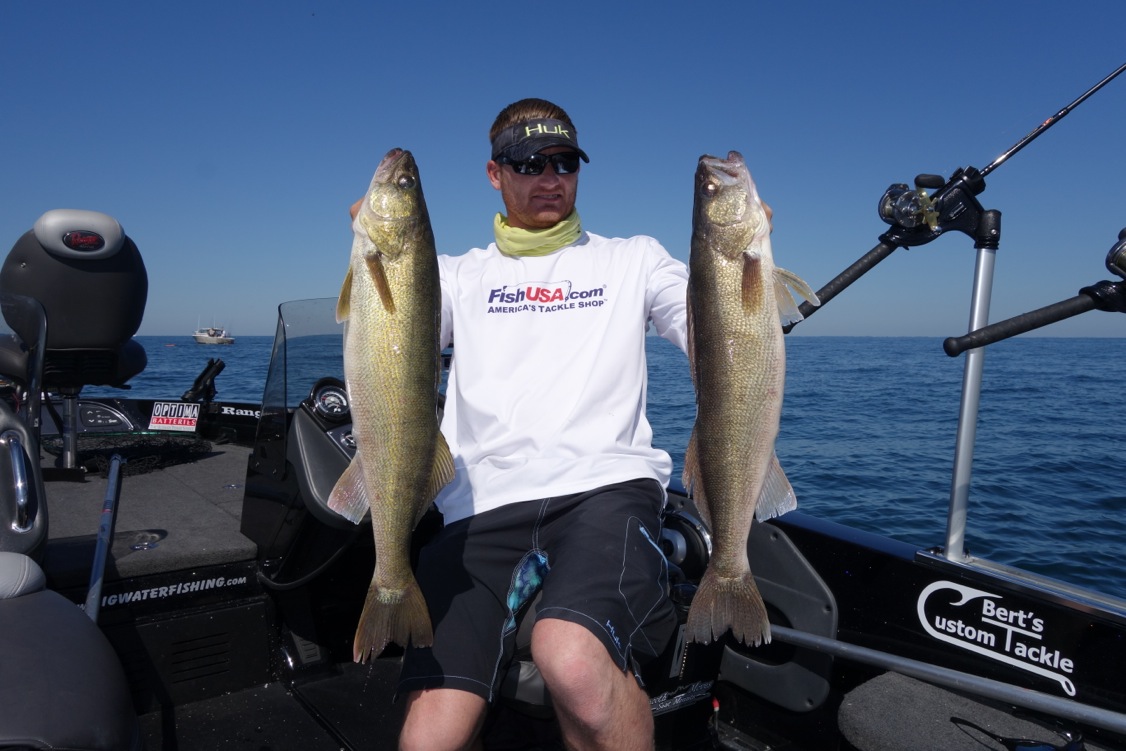
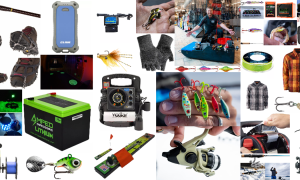

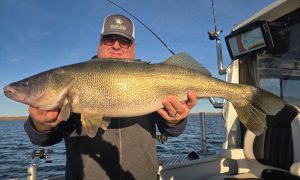

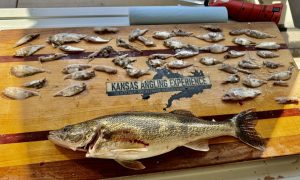



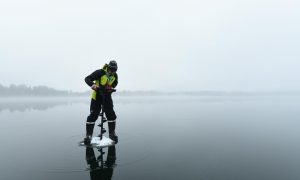



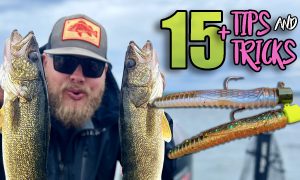

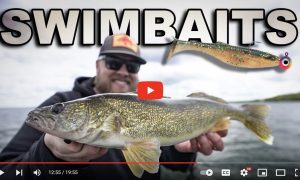

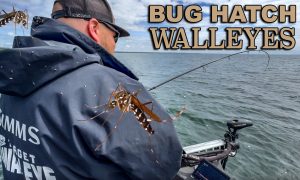

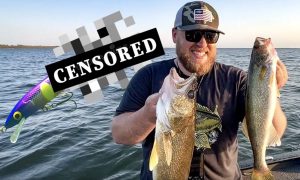

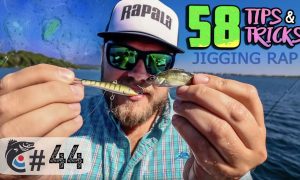

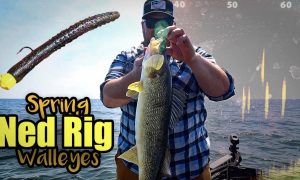

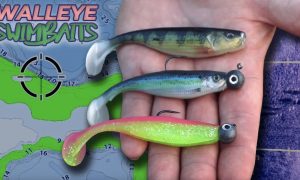

David postle
August 20, 2016 at 12:25 pm
I’m fishing the open waters of Lake Erie and I fish a lot of spoons which I’ve removed the treble hook and attach a 2 hook harness and add a crawler,great flutter off riggers….I enjoyed your article
Jim Edlund
August 24, 2016 at 3:48 pm
David: Cool idea! Make sure to post some pics of your hybrid spoon-harness rig on TW’s Facebook page!